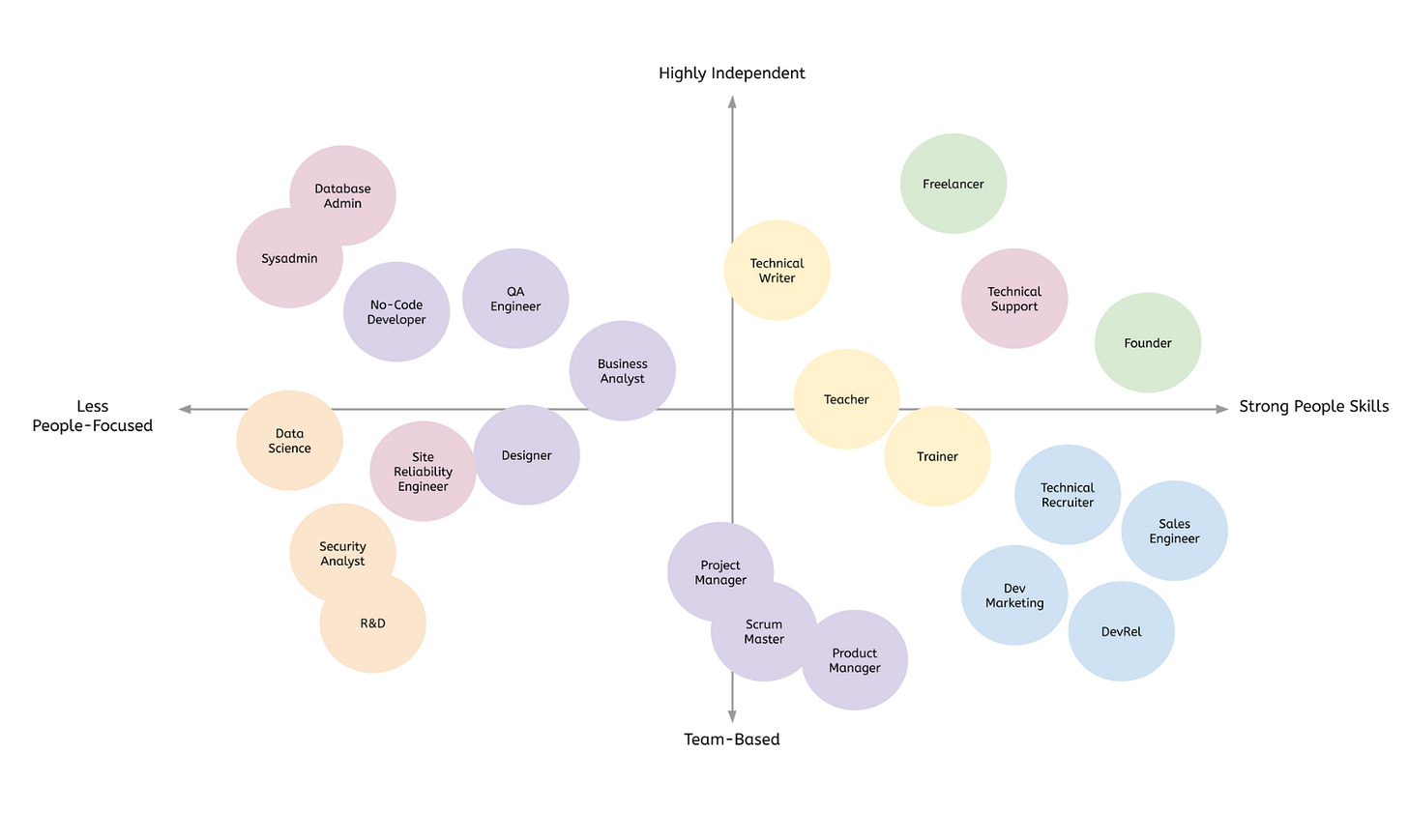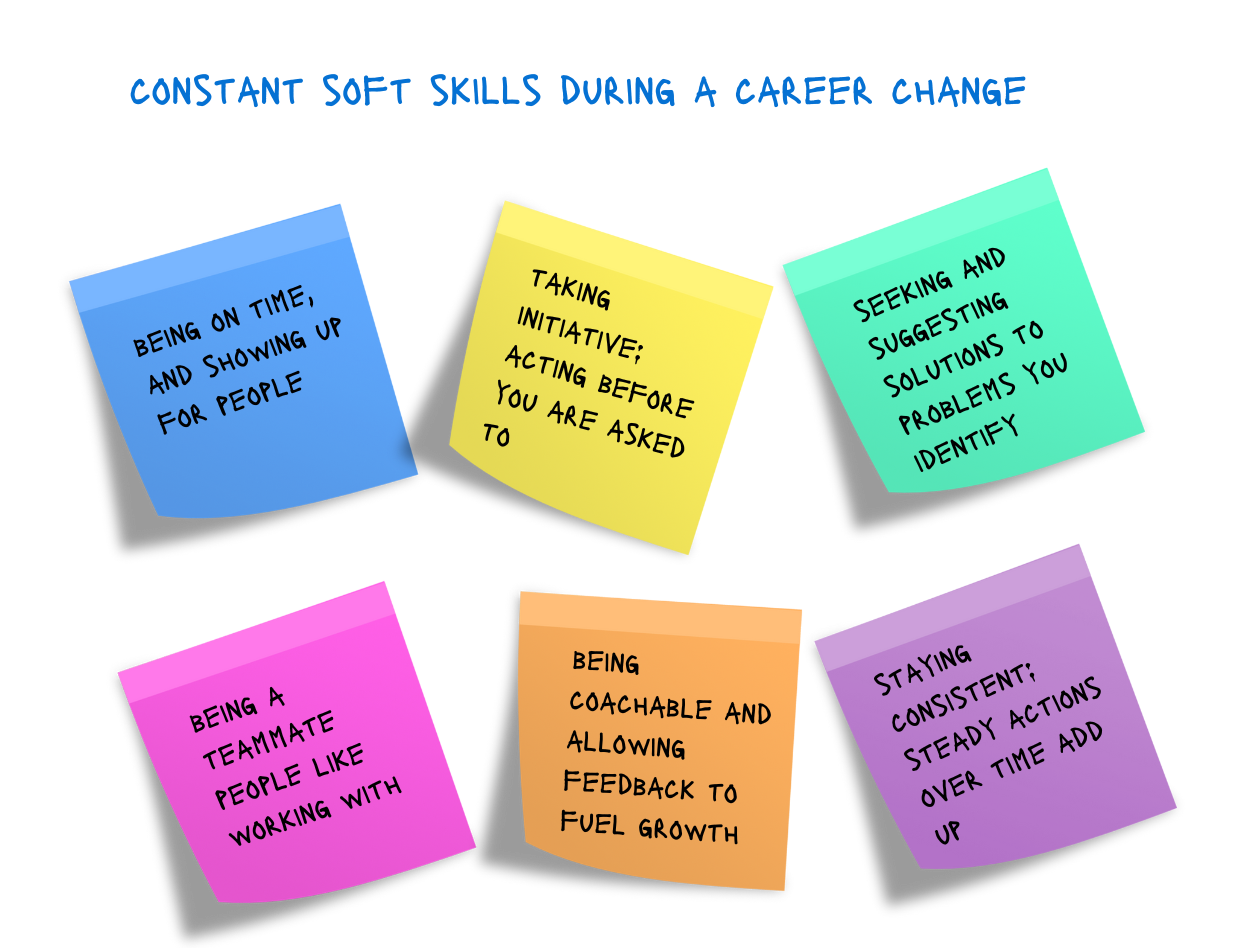Making a Career Shift in Tech: The Basics 🔧
🌀 Exploring the ABCs of changing careers within tech, and talking about how to do it with confidence.
Let’s take a deep breath. 🧘♀️
Change is almost always difficult, but trust me, it can bring great relief and joy (hopefully) in your long career run 🏃.
Trust your gut. That’s what I did at least, and would recommend 100%. I wanted to do more of the things I was doing the least of in my backend software engineering job at Amazon. I initially felt confused about what I wanted - but writing down the parts I was enjoying vs what felt like a drag helped me learn what I wanted more of - talking to customers, identifying features to build, and making the product better with customer feedback.
Maybe you've been coding away as a software engineer (SWE) but find yourself drawn to the world of product management, customer success, or another adjacent field. Or perhaps you're outside the world of engineering and want to step into SWE itself. Whatever the case, career pivots within tech are more common than you might think—and totally doable.
Let’s break it down 👇
Start with the ‘Why’
😵💫 Maybe you’re feeling burned out from coding all day.
🤔 Maybe you’ve realized you love the what and why of building things more than the how.
🤝 Or maybe, after talking to customers, you’ve discovered you enjoy solving problems from a different angle.
Whatever your reason, a career change doesn’t mean you’ve wasted time—it really means you’ve gathered experience that will make you even better in your next role - and allow you to bring a unique flavor to the team.
📝 HQ Tip
If you’re feeling stuck but don’t know what paths you could take in your technical career - take a look at this graph (by freecodecamp.org) to explore some common options available. I personally used this resource when I switched careers, because I started out not knowing anything other than how to be a SWE. You can read more here.
Identify what’s standing in your way
Switching roles within tech isn’t always seamless. It can come with a lot of feelings of guilt, negativity, and doubt - and that can make you feel like you are getting nowhere even with a huge amount of effort. But it’s all worth it once you make it happen.
📝 HQ Tip
The main game here is convincing hiring managers you’re the right fit, and you have the drive to learn whatever you don’t know yet, on the job.
I’ll use my own example here to dive deeper into common challenges you may encounter (You can read more about my background here). I’ll talk about how I approached them, and navigated my career change from SWE to Customer Success:
🧑💻 Lack of experience: Started small by taking on responsibilities related to my target role within my current job. Side projects, online courses, and also volunteering some work in relevant communities all helped me.
How this helps you ➡️ Really helps in behavioral interviews when you need to talk about how you dealt with particular situations. If you can show you have already dealt positively with problems/situations that you may encounter in your new role, this is a huge plus.
🎭 Imposter syndrome: Remembering that no one starts as an expert was key. I initially felt overwhelmed, but told myself it’s okay to start somewhere and then grow. I just have to be willing to learn, and show that in my interviews.
How this helps you ➡️ It’s right to focus on what you do bring to the table, whether it’s technical skills, problem-solving abilities, or domain knowledge, rather than what you don’t. But always mention you are open to learning what you don’t already know - Can I stress this enough?
🕵️♀️ Getting hired: I tailored my resume and LinkedIn profile subtly to highlight my transferable skills. I also networked with people, and tried to generally learn more about the role so I knew how to portray myself as a good fit when the right opportunity showed up.
How this helps you ➡️ You can tailor your resume and LinkedIn profile subtly (This is key - don’t alter it too much as this can be a red flag). Adding two sentences in your resume on the top explaining why you want to make the transition is also a great idea as it shows what you want and gives you a chance to explain why you’d be a great fit in that role.
How to get started and push ahead
I feel and have come to understand that switching careers within tech is less about starting over and more about leveraging what you already know in a new way. Your background gives you a unique perspective, and your skills—whether technical, strategic, or customer-focused—are more transferable than you might think.
Don’t forget your soft skills, which can help you stand out when you’re talking to a recruiter. Show them off by sharing specific stories where they played a key role. Whether it was navigating a tough stakeholder conversation, mentoring a junior colleague, or stepping up in a crisis, concrete examples make your skills more memorable and concrete. In fact, they help build your personal brand.
📝 HQ Tip
A recruiter is far more likely to remember the person who jumped in to fix a major production issue over the weekend when the team lead was out than someone who simply worked on Feature X at their last job. 🚀
Here are a few soft skills worth talking about -
So if you really want to explore another technical career, leverage your current skills and give it a shot.
Trust your gut 👀,
Take on projects 👨💻,
And don’t be afraid to put yourself out there 🙋.
That’s it for today! Let me know what you think about this post or if there is a career shift in particular you are struggling with by simply replying to this email or leaving a comment.
If you are finding this newsletter valuable, consider doing any of these:
1) Subscribe — Every week I write a short actionable post on something I have learnt in my career so far working at software companies in Silicon Valley. I cover things that I struggled with, which I have developed some mind maps for - how to navigate your tech job, network with people, and grow your net worth along the way. Read more about me and my journey which lead me to start writing Onboarded. Consider subscribing to get this content directly in your inbox:
2) Read with your friends — Help grow the onboarded team by sharing the article with a friend who may be in a similar boat. You can simply send them the email or send me a note with their email.
I wish you a great week!
Until next time,
Sonika





